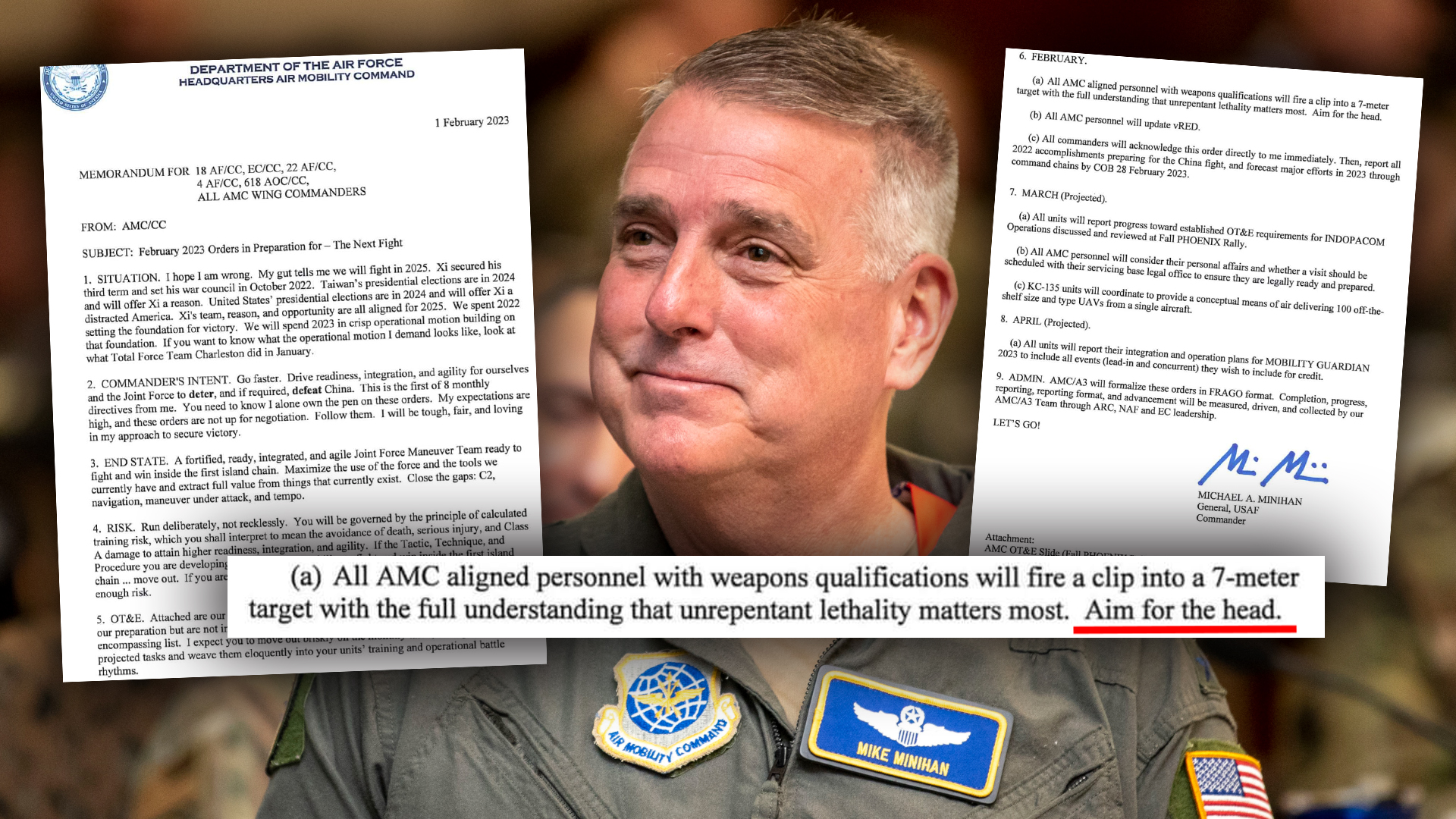The head of the U.S. Air Force’s Air Mobility Command, Gen. Mike Minihan, has issued an ominous warning about a looming future high-end conflict against China, likely over Taiwan. In response, he is ordering leadership under his command to work to ensure their units are as prepared as they can be for this potentiality. This goes right down to demanding that various personnel visit the shooting range to make clear that “unrepentant lethality matters most,” with Minihan imploring them to “aim for the head.”
These remarks and others from Minihan are included in a two-page internal memo, seen below, that has emerged on social media. TSgt. Zachary Boyer, a spokesperson for Air Mobility Command (AMC), confirmed to The War Zone that this document, which is future-dated February 1, is indeed authentic. AMC oversees the bulk of the Air Force’s aerial refueling tankers and cargo aircraft, among other responsibilities.
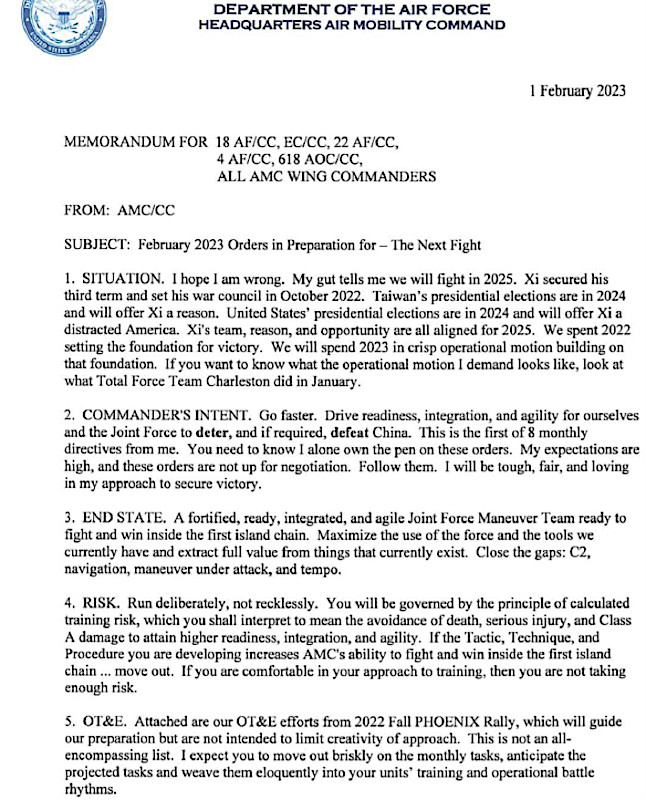
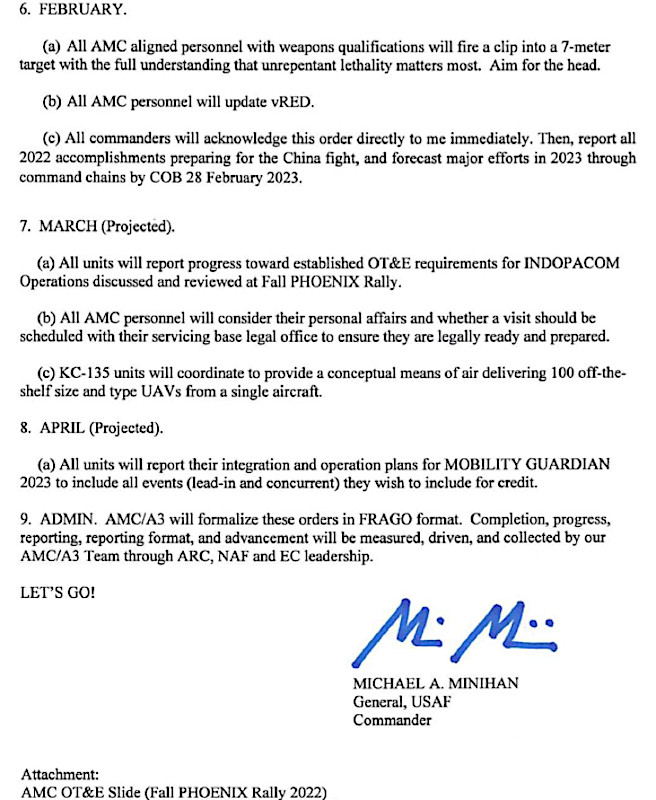
“I hope I am wrong. My gut tells me we will fight in 2025. [Chinese President] Xi [Jinping] secured his third term and set his war council in October 2022,” Minihan’s memo says bluntly by way of introduction. “Taiwan’s presidential elections are in 2024 and will offer Xi a reason. [The] United States’ presidential elections are in 2024 and will offer Xi a distracted America. Xi’s team, reason, and opportunity are all aligned for 2025.”
For some time now, senior U.S. military officials from the Air Force and other services have been warning that the Chinese People’s Liberation Army (PLA) could be in a position where they would feel confident enough to launch an intervention against Taiwan by around 2027. Some top U.S. officers have already suggested that the PLA could reach this point sooner and that American forces need to be ready for that contingency.

“We spent 2022 setting the foundation for victory,” he adds. “We will spend 2023 in crisp operational motion building on that foundation.”
Still, AMC needs to “go faster,” Minihan continues, adding that this will be the first of at least eight monthly directives from him. “Drive readiness, integration, and agility for ourselves and the Joint Force to deter, and if required, defeat China” (emphasis in the original).

At the same time, the memo says to “run deliberately, not recklessly.” It also stresses that “you will be governed by the principle of calculated training risk, which you shall interpret to mean the avoidance of death, serious injury, and Class A damage to attain higher readiness, integration, and agility.”
The “end state” the AMC commander says he is looking for is “a fortified, ready, integrated, and agile Joint Force Maneuver Team ready to fight and win inside the first island chain.” The area inside the “first island chain” is defined as being between mainland East Asia and a boundary formed by various archipelagos to the east, as seen in the map below.
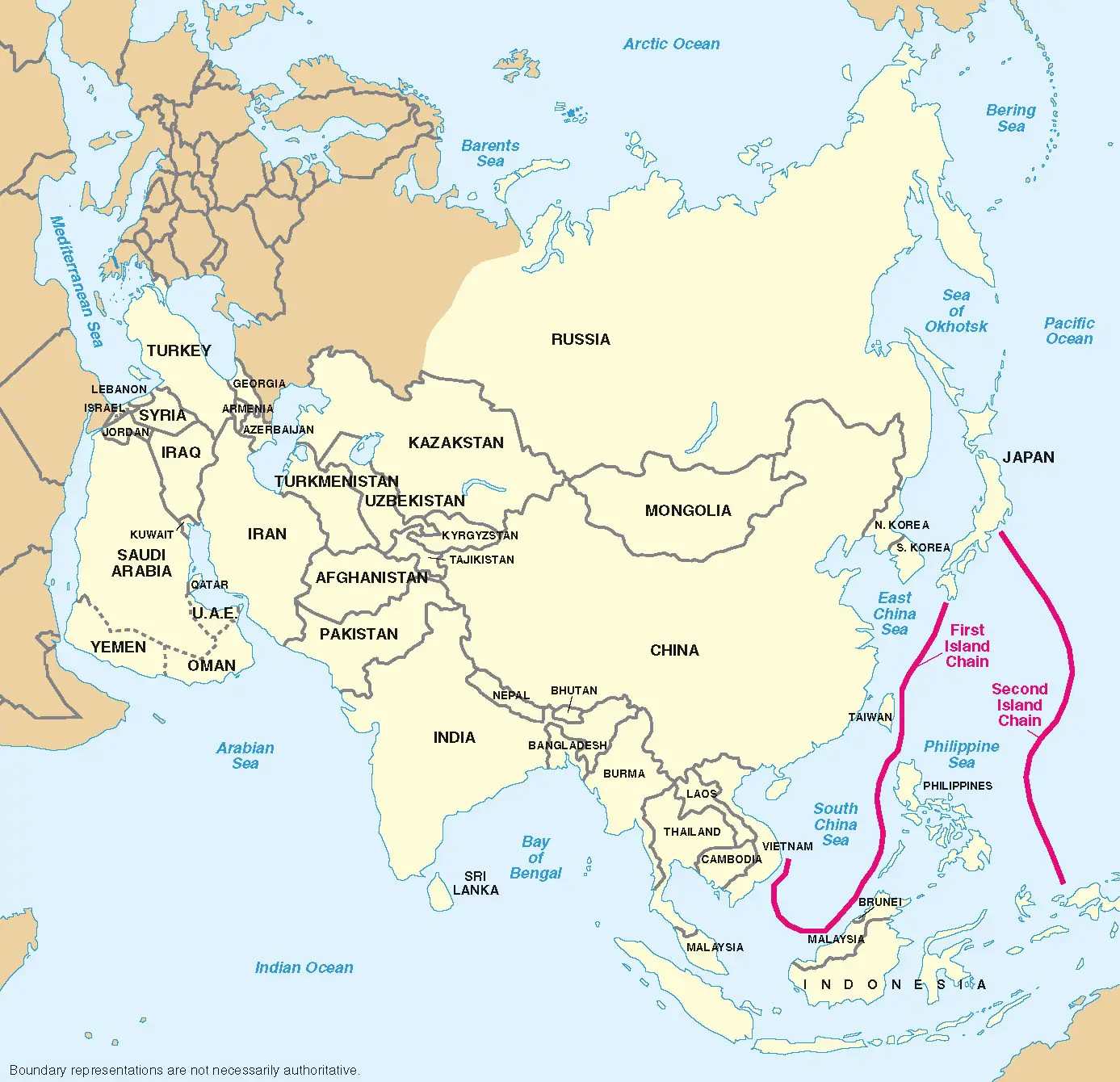
The latter part of the memo outlines tasks to be completed in February, as well as ones projected to be completed in March and April.
“All commanders will acknowledge this order directly to me immediately” by the end of next month, according to the memo. “Then report all 2022 accomplishments preparing for the China fight, and forecast major efforts in 2023.”
In addition, “all AMC aligned personnel with weapons qualifications will fire a clip into a 7-meter target with the full understanding that unrepentant lethality matters most. Aim for the head.”
This comment is clearly aggressive, but also puzzling from a practical standpoint. Shooting for the head is not common guidance for regular small arms training. Shooting at the center of mass provides a much more reliable target to hit.
No particular individual weapon is specified here. Just yesterday, the public affairs office at the 60th Air Mobility Wing, which falls under AMC, published a news item calling attention to hundreds of personnel within the unit training to “re-familiarize themselves with the M4 carbine” as part of a change in readiness requirements in recent years.
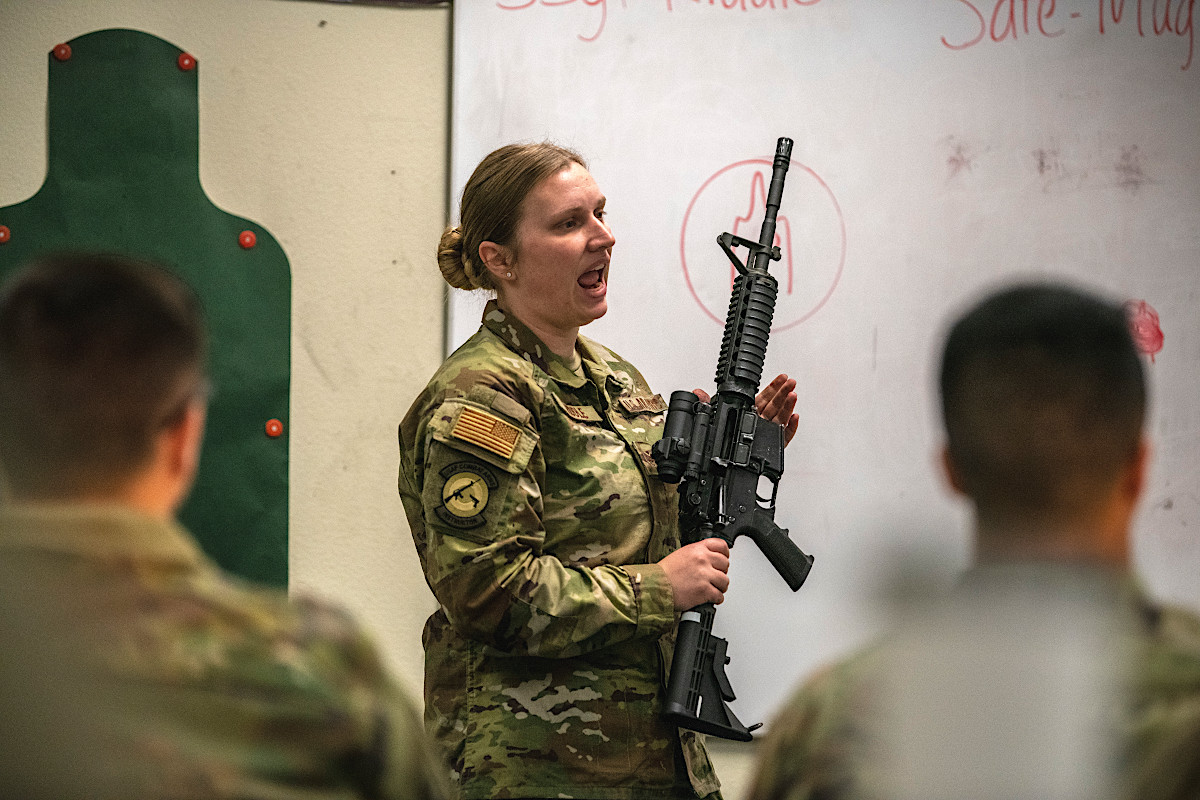
“This quick, hands-on training gives Airmen the familiarity they need to be comfortable if the occasion would arise where they need to use this weapon, especially outside of their career fields,” Air Force Master Sgt. Justin Traylor, 60th Security Forces Squadron logistics superintendent, is quoted as saying in that piece.
The projected tasks in the memo for March and April are largely about exercises and administrative issues. However, the March section does include plans to require all units to “progress toward established OT&E [Operational Test and Evaluation] requirements for INDOPACOM [U.S. Indo-Pacific Command] Operations discussed and reviewed at Fall PHOENIX Rally.”
A slide showing the OT&E requirements identified during the Fall PHOENIX Rally event, which took place last year, lists numerous organizational, training, and equipment-related items. Only one item, “Go-Pills,” a term used to describe stimulants prescribed to pilots and other aircrew for very long duration missions, is marked with a green check mark, denoting it was already being “Completed / Ready for implementation” at that time. A number of others, including organization efforts to further improve “max endurance” and the acquisition of equipment related to things like “palletized munitions” are marked with yellow checks to indicate “In-Work / Some level has been accomplished.”
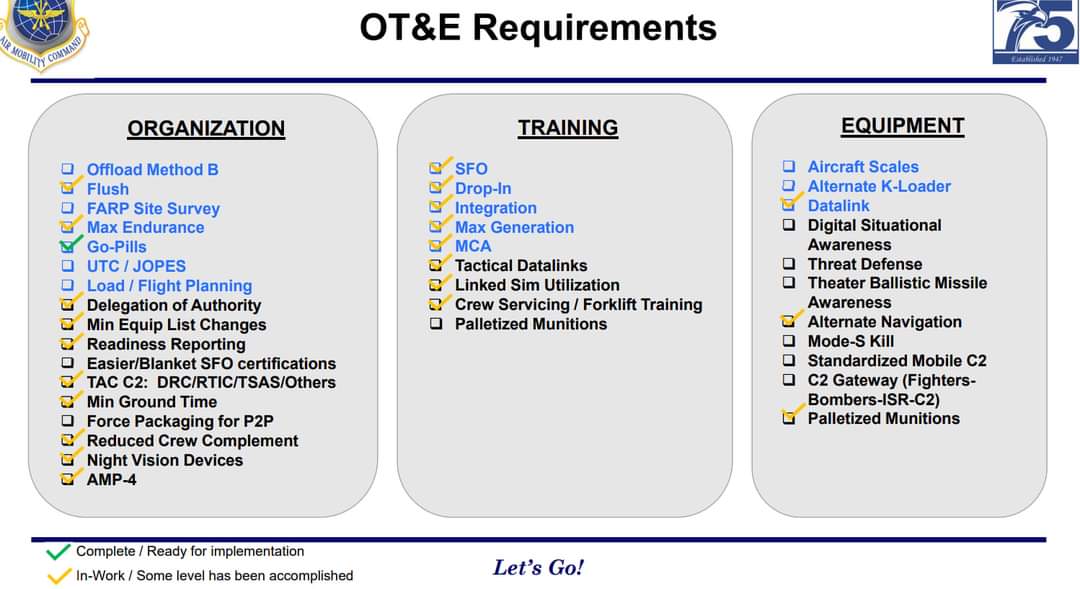
There are also a number of unchecked boxes. These include a separate mention of palletized munitions operations in the training category, as well as equipment to help with things like “theater ballistic missile awareness” and command and control.
The most intriguing part mentions work on a concept for how to launch around 100 commercial-of-the-shelf drones from a KC-135 aerial refueling tanker. TSgt. Boyer, the AMC spokesperson, told The War Zone that is nothing to add “at this time” about the KC-135 drone launcher concept plans.
Launching swarms of drones out of a KC-135 is a puzzling choice. There are no apertures or relevant pylons on the aircraft available to do this at this time. Doing so would require deep integration, storage, and specific tactics to achieve. We laid out a near identical concept for the P-8 Poseidon in a past feature that you can read here, but that aircraft was designed to carry and launch many smaller payload items through rotary and individual sonobuoy launchers. It also has a weapons bay and multiple weapons pylons. Regardless, studies have repeatedly highlighted that a mesh network of unmanned systems operating over the Taiwan Strait could be critical in the outcome of a conflict there. Why KC-135 would be chosen for the drone deployment role, over AMC’s many airlifters with large cargo hold and ramps to deploy swarms, as well as defensive systems, is a mystery at this time. Still, the KC-135 has been used to develop new manned-unmanned collaborative concepts in the past.
The general tone and candor of the memo are certainly aggressive, but are not necessarily out of the ordinary for Gen. Minihan.

“I’m not interested in being the best Air Force on the planet,” he said in a statement included in the recent 60th Air Mobility Wing’s story about personnel training with their M4s. “I’m interested in being the most lethal force the world has ever known.”
“So I’m going to make everybody nervous here,” the AMC commander had said at the beginning of a fiery keynote address, titled “The Mobility Manifesto,” which he gave at the Air & Space Forces Association’s 2022 Air, Space & Cyber Conference last September. “I’m not bound to the stage, I’m not bound to a script. I’m untethered as of now.”

“I’m here because I spent 10 years in the Pacific … All that combined is about 10 years of experience in the Pacific worrying about the pacing challenge and nefarious actors like North Korea,” Minihan said during that speech. “That’s why I have this job. And five minutes before he promoted me, [Air Force Chief of Staff] General [C.Q.] Brown said two words in the back room. Go faster.”
Minihan is certainly not alone in expressing a sense of urgency when it comes to preparedness for a future high-end conflict against a potential near-peer adversary, especially China. In the newly emerged memo, Minihan specifically draws attention to potential “gaps” in “C2 [command and control], navigation, maneuver under attack, and tempo,” which could certainly have particularly pronounced impacts on operations in the Pacific.
In recent years, the Air Force and other branches of the U.S. military have only become more and more concerned about various issues that are clearly related to these “gaps.” This includes the dangers of GPS jamming and spoofing impacting navigation, as well as guidance, and threats to command and control nodes, including space-based systems.
There are very real concerns on a number of levels about the Air Force’s ability, in particular, to conduct and sustain high-tempo operations while under attack. This is driving the development of new expeditionary and distributed deployment concepts of operations within the service, currently known collectively as Agile Combat Employment (ACE), as well as expanded base defense capabilities.

Many of the unchecked boxes in the aforementioned Fall PHOENIX Rally slide attached to Minihan’s new memo speak directly to these concerns.
The capabilities that China’s military and other elements of that country’s security services possess now and others that they are actively developing are key drivers behind all of this. The Pentagon has made no secret of the fact that China is the current “pacing threat” against which it is basing much of its future force structure, acquisition, and other planning.
Minihan himself has been very actively engaged in ACE and ACE-adjacent initiatives. This includes a still controversial concept that AMC is exploring involving KC-46A Pegasus aerial refueling tankers operating with skeleton crews consisting of just one pilot and one boom operator. The command has said specifically that this is being considered as a potential way to expand critical aerial refueling capacity during future high-end conflicts, especially one potentially against China.
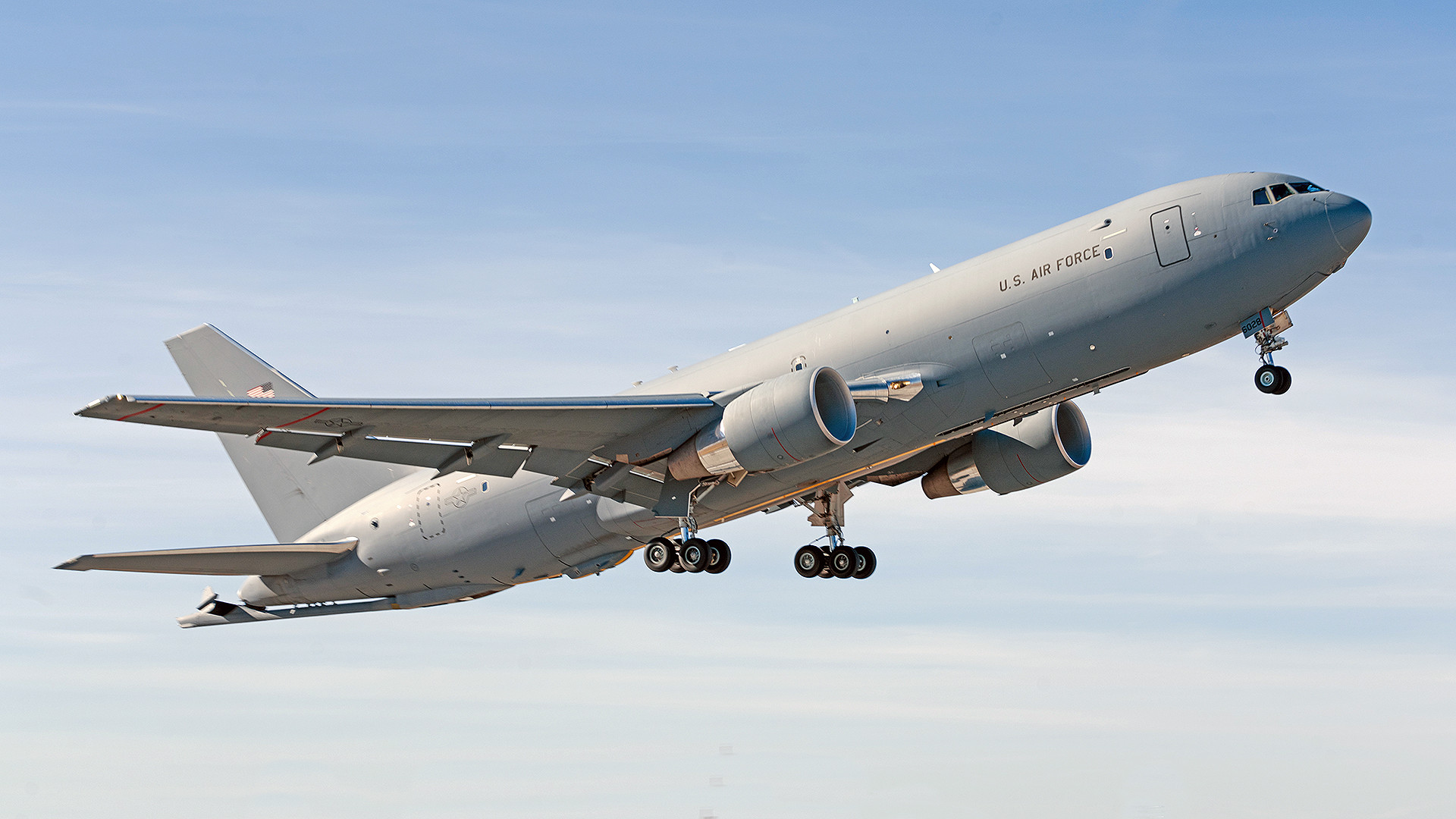
Questions and concerns have been repeatedly raised regarding this idea, especially in terms of crew safety, as you can read more about here. Minihan’s newly revealed memo has a passage that would seem, at least in part, to be a response to this particular criticism.
“If the Tactic, Technique, and Procedure you are developing increases AMC’s ability to fight and win inside the first island chain … move out,” he says. “If you are comfortable in your approach to training, then you are not taking enough risk.”
All this being said, it is important to note that Minihan’s language in this memo, especially about the potential for a conflict with China in two years, could be more about trying to convey a sense of urgency to AMC commanders to work as fast as reasonably possible to improve in key areas than about actual threat projections.
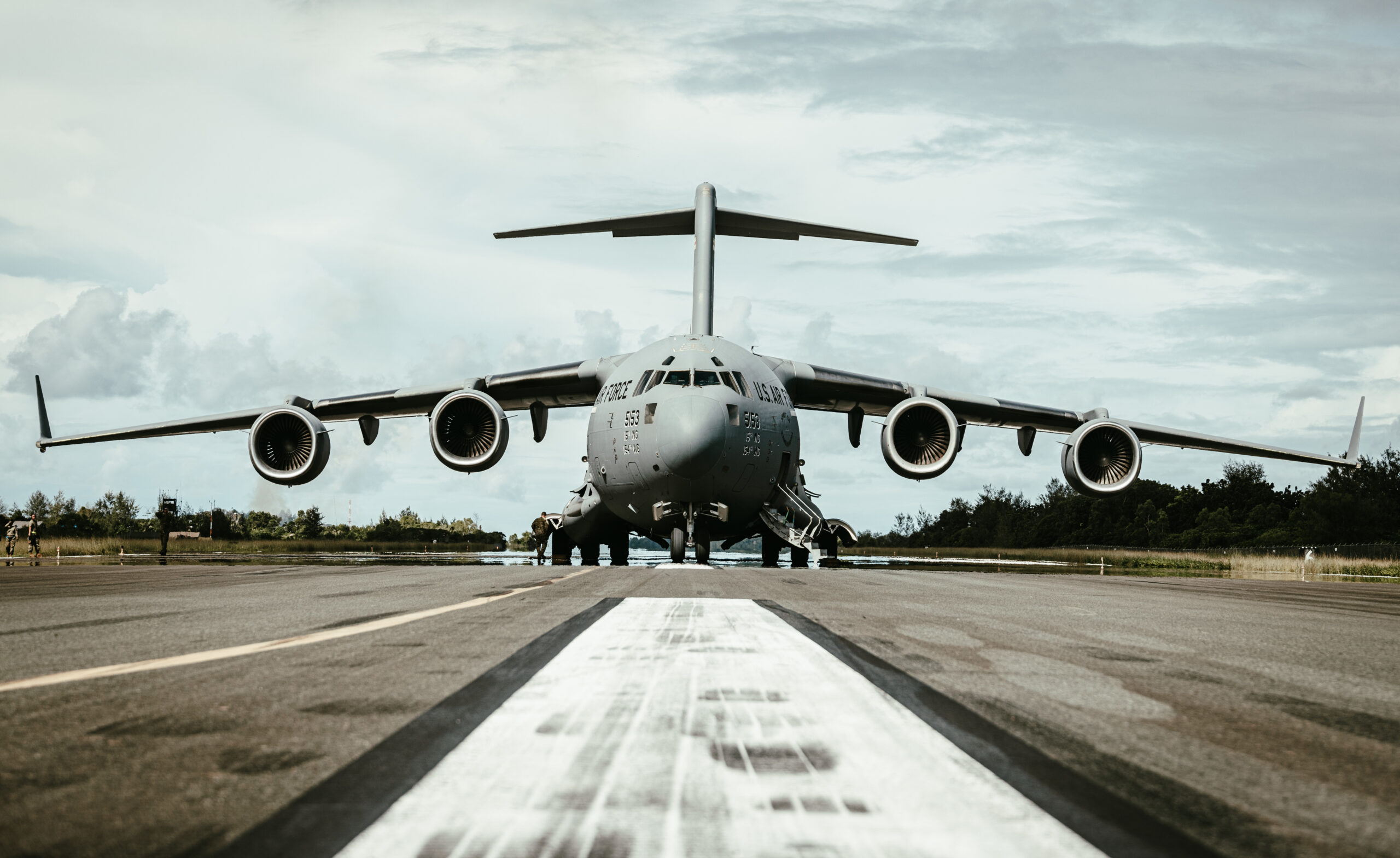
Though an internal document, a desire to more strongly influence various budgetary and policy matters inside AMC and elsewhere could very well be another factor here. In terms of issues impacting AMC directly, various senior U.S. military leaders have been very open in recent years about concerns that existing aerial refueling and airlift capacity could be strained, potentially close to a breaking point, in a high-end fight. Fears about the vulnerability of those aircraft are only growing, too. The Air Force is now in the very early stages of work that it hopes could lead to the acquisition of next-generation airlifters and tankers.
Regardless, Minihan is not alone within the U.S. military in his clear desire to be better prepared for any potential future major high-end fight, particularly one with China, or his fears that there is a growing possibility that such a conflict could be coming soon.
Emma Helfrich contributed to this report.
Contact the author: joe@thedrive.com
